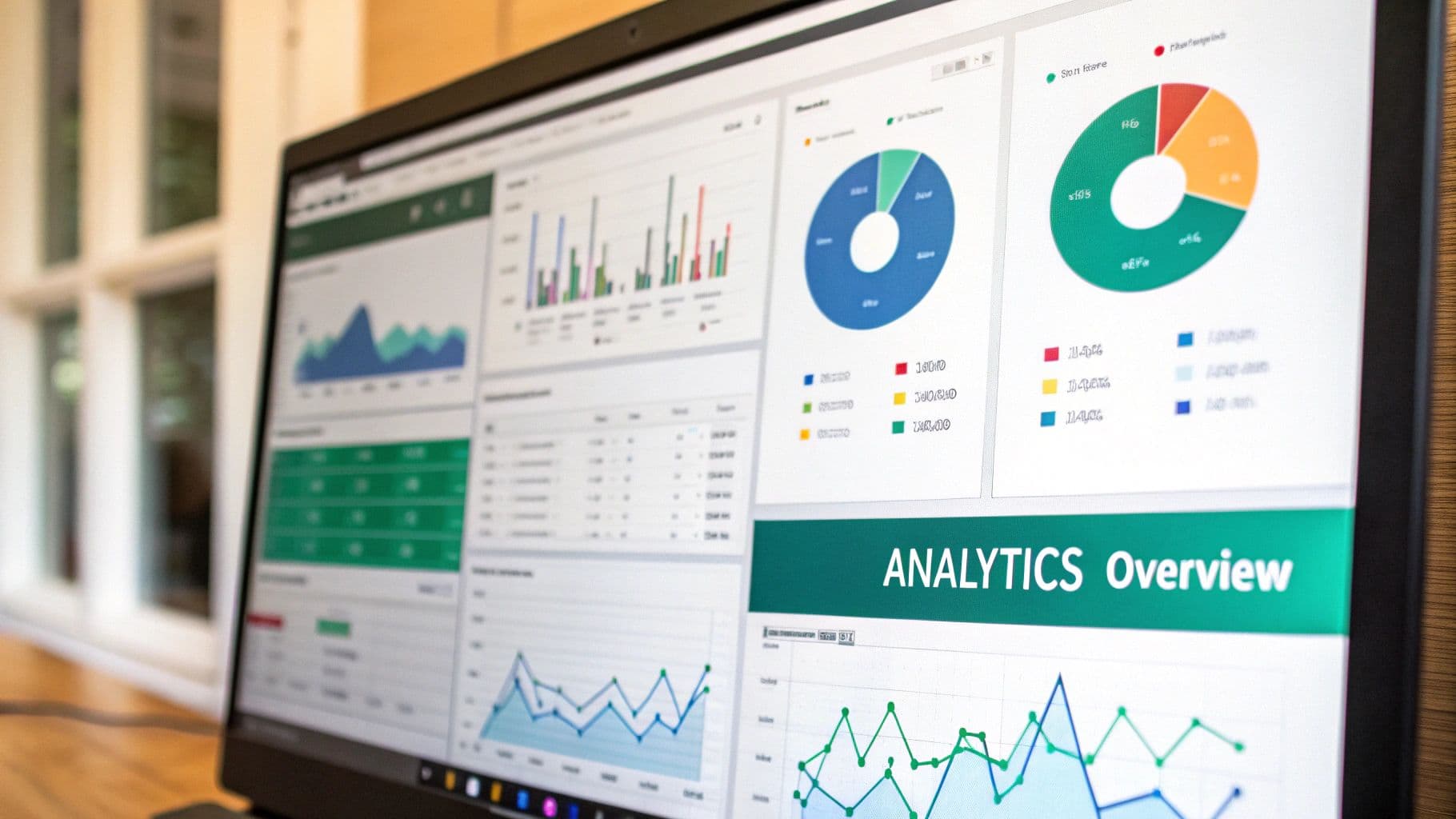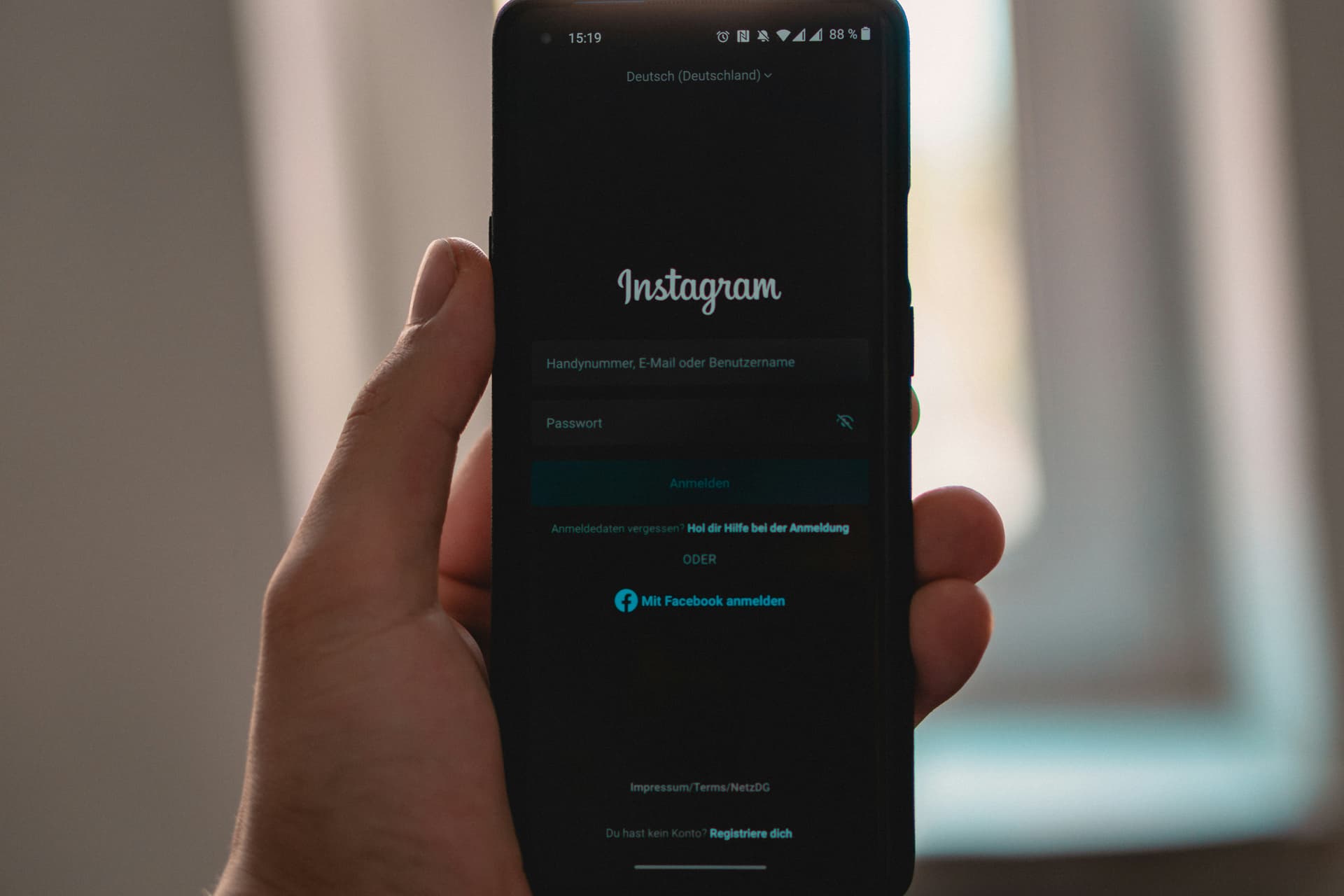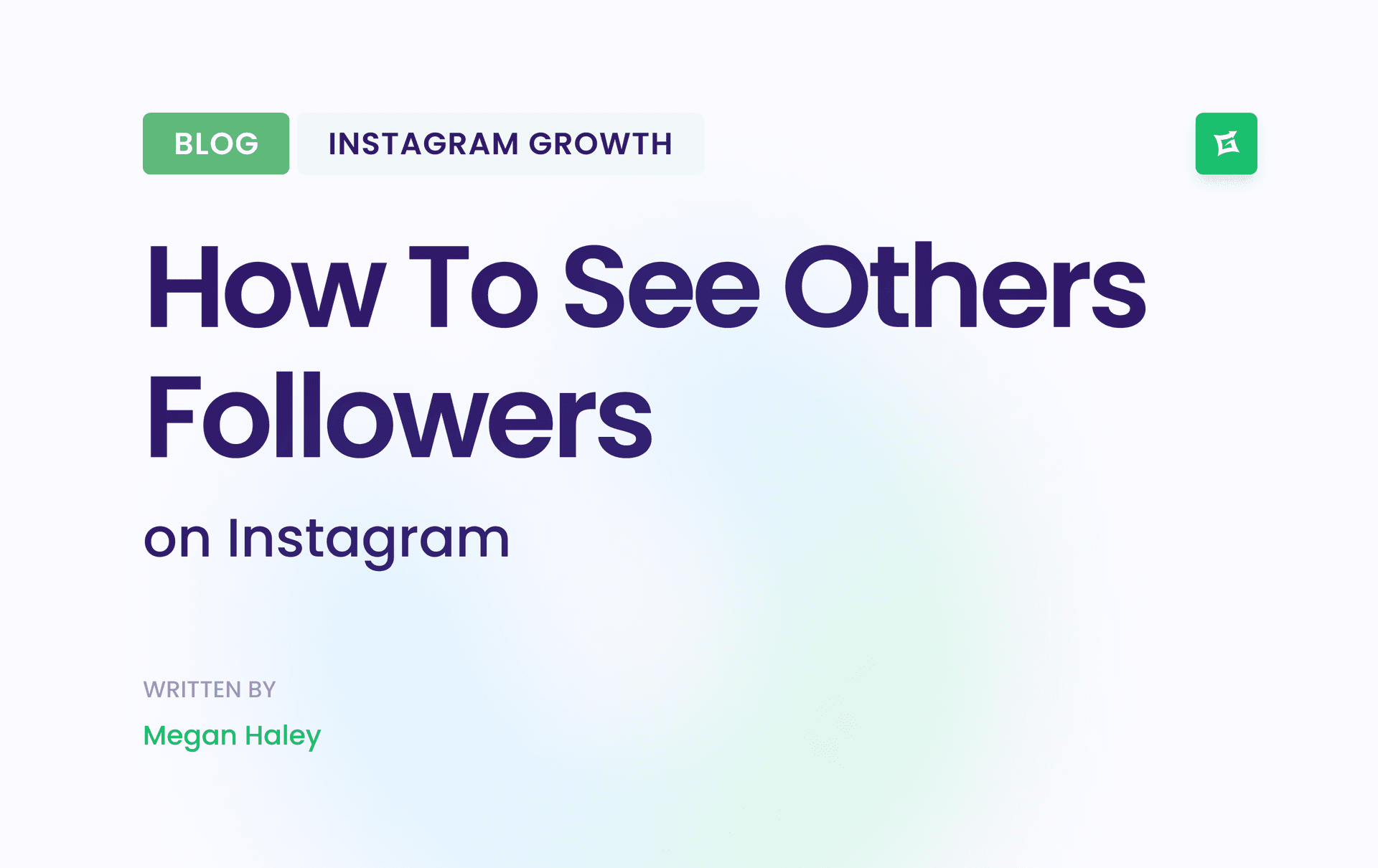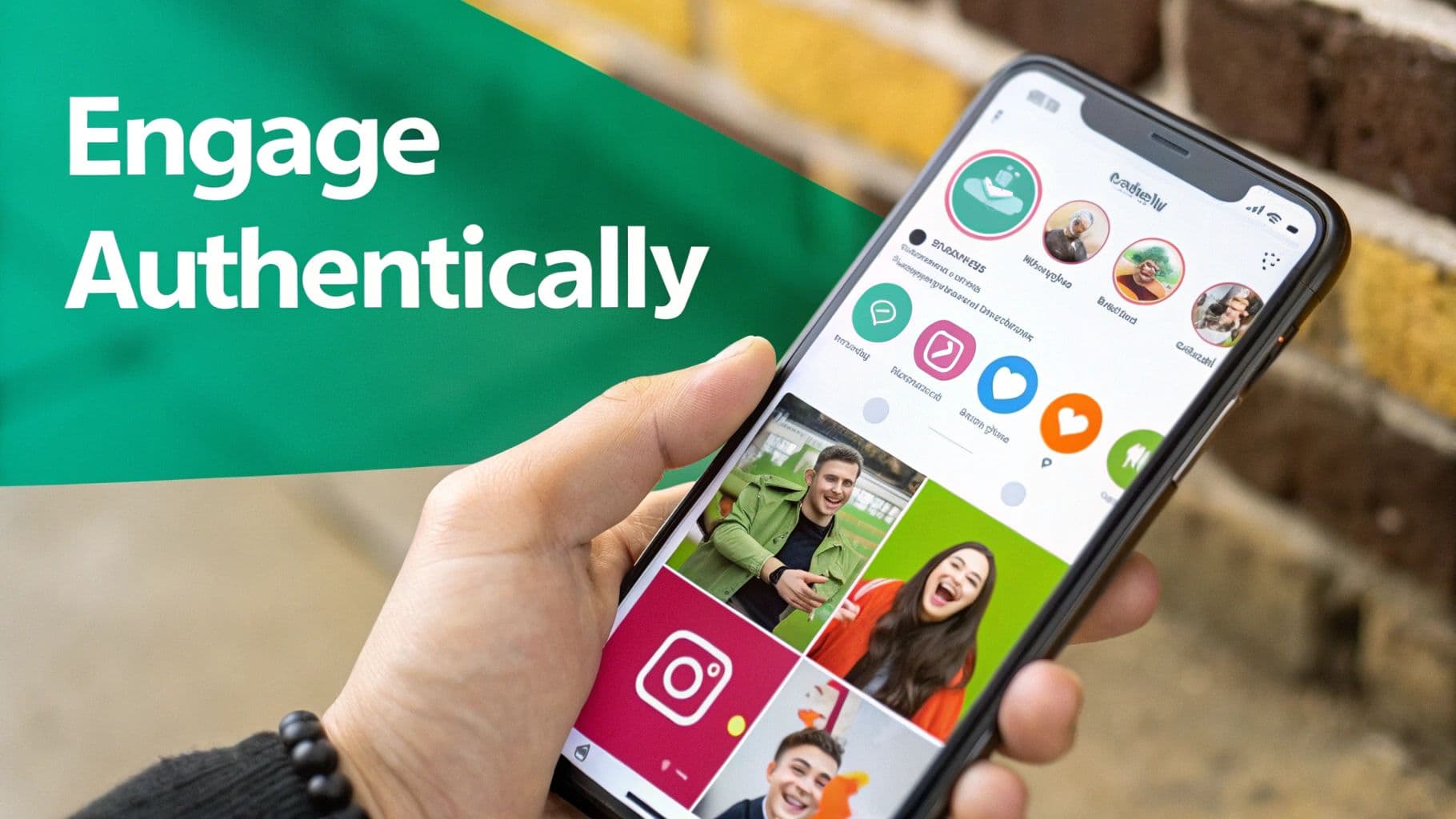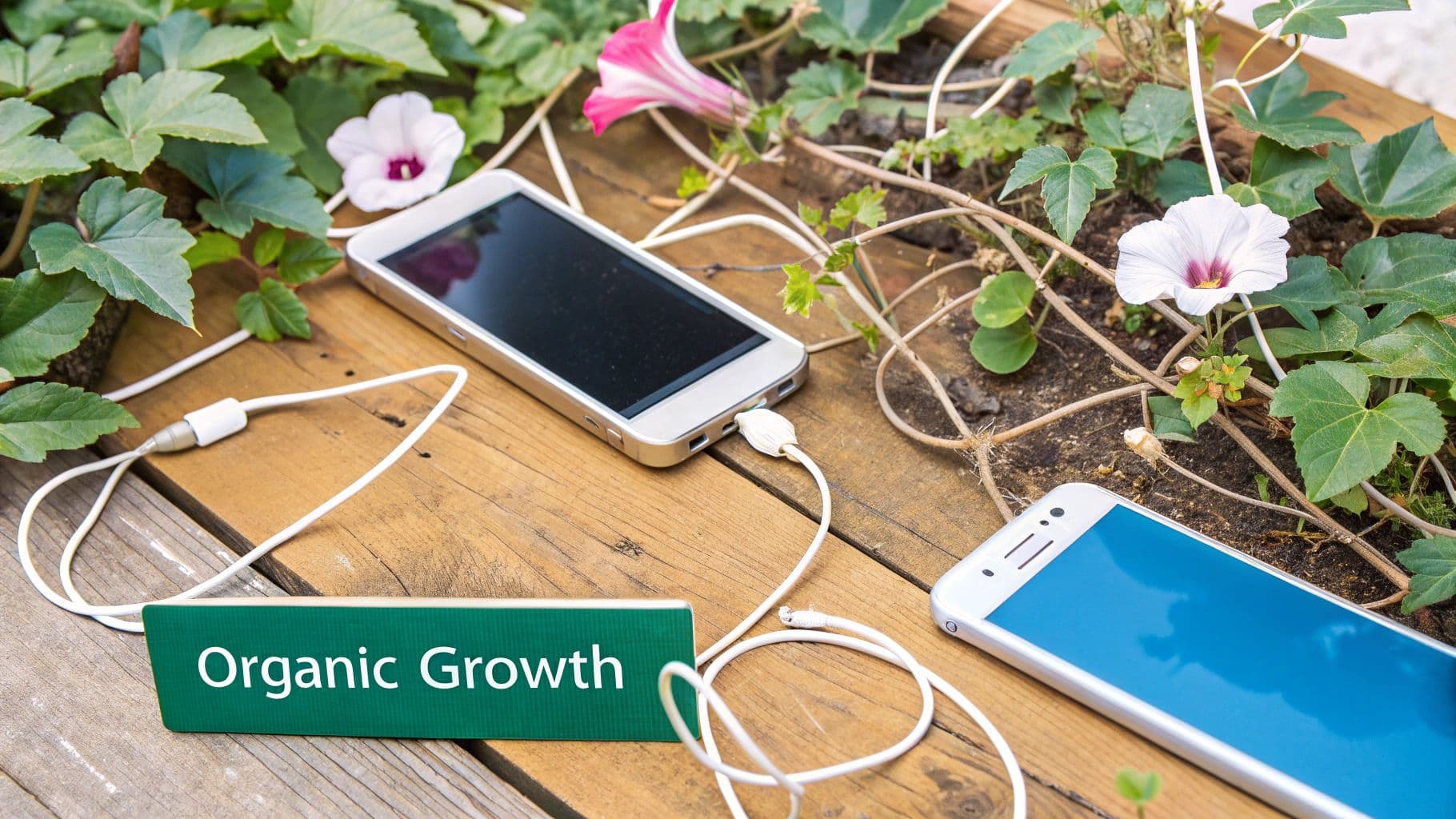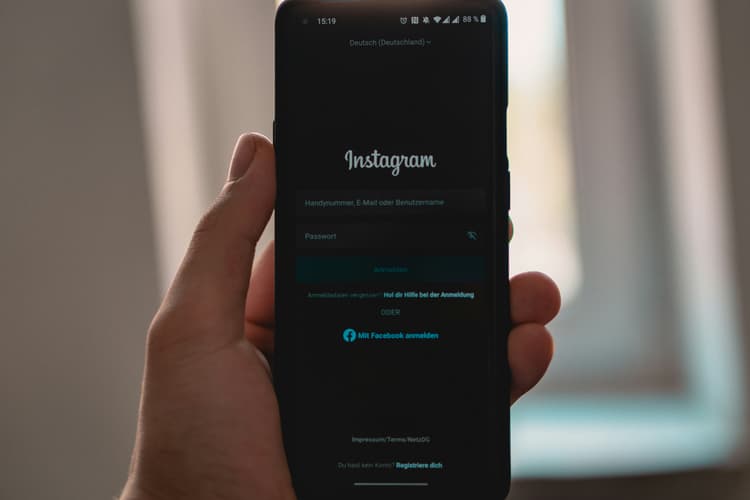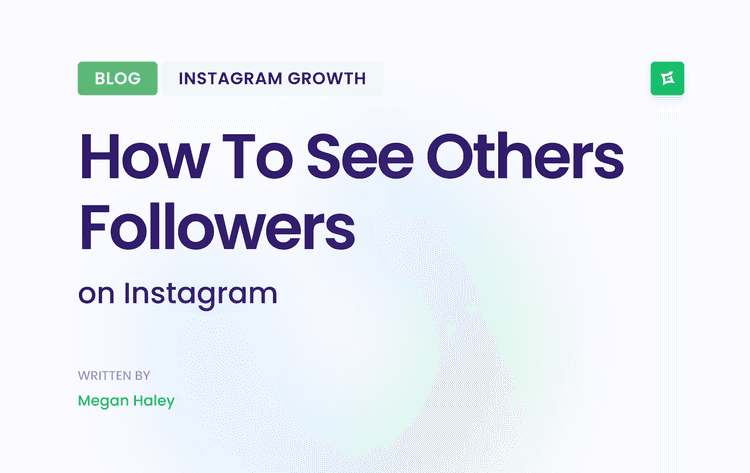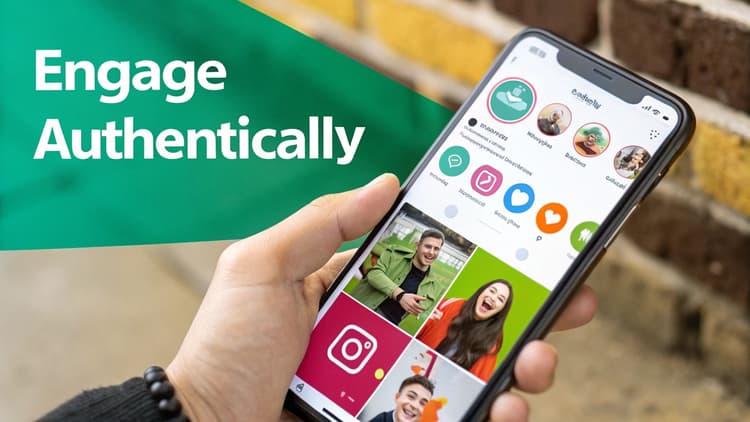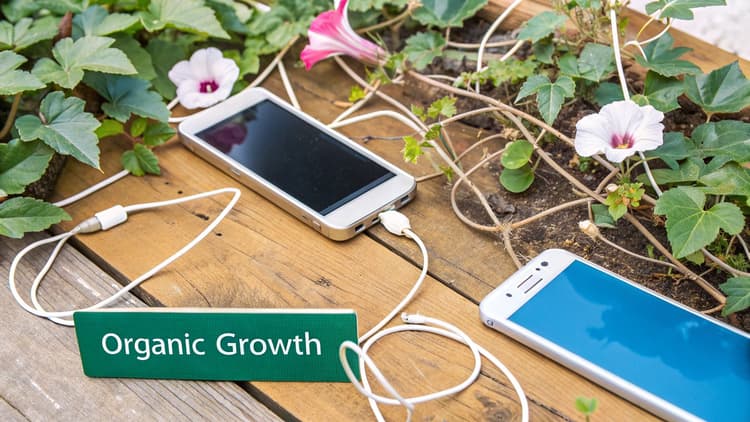Understanding Instagram's Business Growth Potential
Why Instagram Analytics Matter
Basic metrics like follower counts only tell part of the story. To truly understand your Instagram performance, you need to examine deeper analytics that reveal reach, engagement rates, and website traffic. These insights help you identify exactly who your audience is and how they interact with your content.
The sheer scale of Instagram's user base makes it impossible to ignore for businesses. Recent data shows the platform has 1.628 billion active users worldwide, making it the fourth most popular social network globally. User growth remains strong, with a 23.5% increase adding 310 million new users in just three months. Around 20.3% of people worldwide now use Instagram, and since it's limited to users 13 and older, the percentage of eligible users is even higher. For more detailed statistics, visit DataReportal's Instagram Stats. You might also find helpful: How to master your business profile on Gainsty.
Leveraging Analytics for Strategic Growth
Top-performing companies use Instagram analytics for business to spot new opportunities and refine their approach. By analyzing metrics like comments and shares, they can identify which content resonates most with followers. This data helps them create more engaging posts that connect with their target audience.
Armed with these insights, businesses can better tailor their messaging and target specific customer segments. But collecting data alone isn't enough - companies need a clear plan for measuring results that aligns with their business goals.
Building a Measurement Strategy
An effective Instagram analytics for business strategy starts with setting clear objectives. Think about whether you want to build brand awareness, drive website visits, or generate leads. Once you establish these goals, you can identify the key metrics that will track your progress. This creates a framework for evaluating your Instagram presence, finding areas to improve, and developing data-backed plans for growth.
Essential Analytics Metrics That Drive Business Growth
Knowing your key Instagram metrics is essential for making informed business decisions. While it's easy to get caught up in basic numbers like follower count, the metrics that matter are the ones tied directly to your goals and revenue.
Reach and Impressions: Expanding Your Audience
Reach tells you how many individual accounts saw your content - giving you a clear picture of your actual audience size. In contrast, impressions show the total number of times your content appeared, even if the same person saw it multiple times. For instance, if someone views your post three times, that counts as three impressions but only one reach. This distinction matters because high impressions but low reach could mean you're only connecting with a small, repeat audience rather than growing your following.
Engagement Metrics: Fostering Meaningful Interactions
While visibility is important, engagement shows if people care about your content. The key metrics here are likes, comments, shares, and saves. High engagement means your content connects with your audience in a meaningful way. By tracking which posts get the most interaction, you can create more of the content your followers want to see and share with others. Focus on posts that start conversations rather than those that people quickly scroll past.
Website Traffic and Conversions: Driving Business Results
At the end of the day, most businesses want their Instagram following to drive website visits and sales. Website clicks show you how effectively your content moves people to your site. More importantly, tracking conversions like purchases and sign-ups reveals the actual business impact of your Instagram efforts. This direct link between social media activity and sales helps justify your investment in the platform.
Putting It All Together: Analyzing Instagram ROI
The numbers prove Instagram's value as a business platform. The app generated $49.8 billion in revenue in 2023 - making up 37% of Facebook's total revenue. This represents massive growth from just $0.5 billion in 2015, as reported by Business of Apps. To measure your success on Instagram, look at your reach, engagement, and conversion metrics as a whole. This complete view helps identify which strategies work best for achieving your goals. Regular analysis of these key metrics allows you to refine your approach and get the best possible returns from your Instagram marketing.
Mastering Engagement Analytics for Real Results
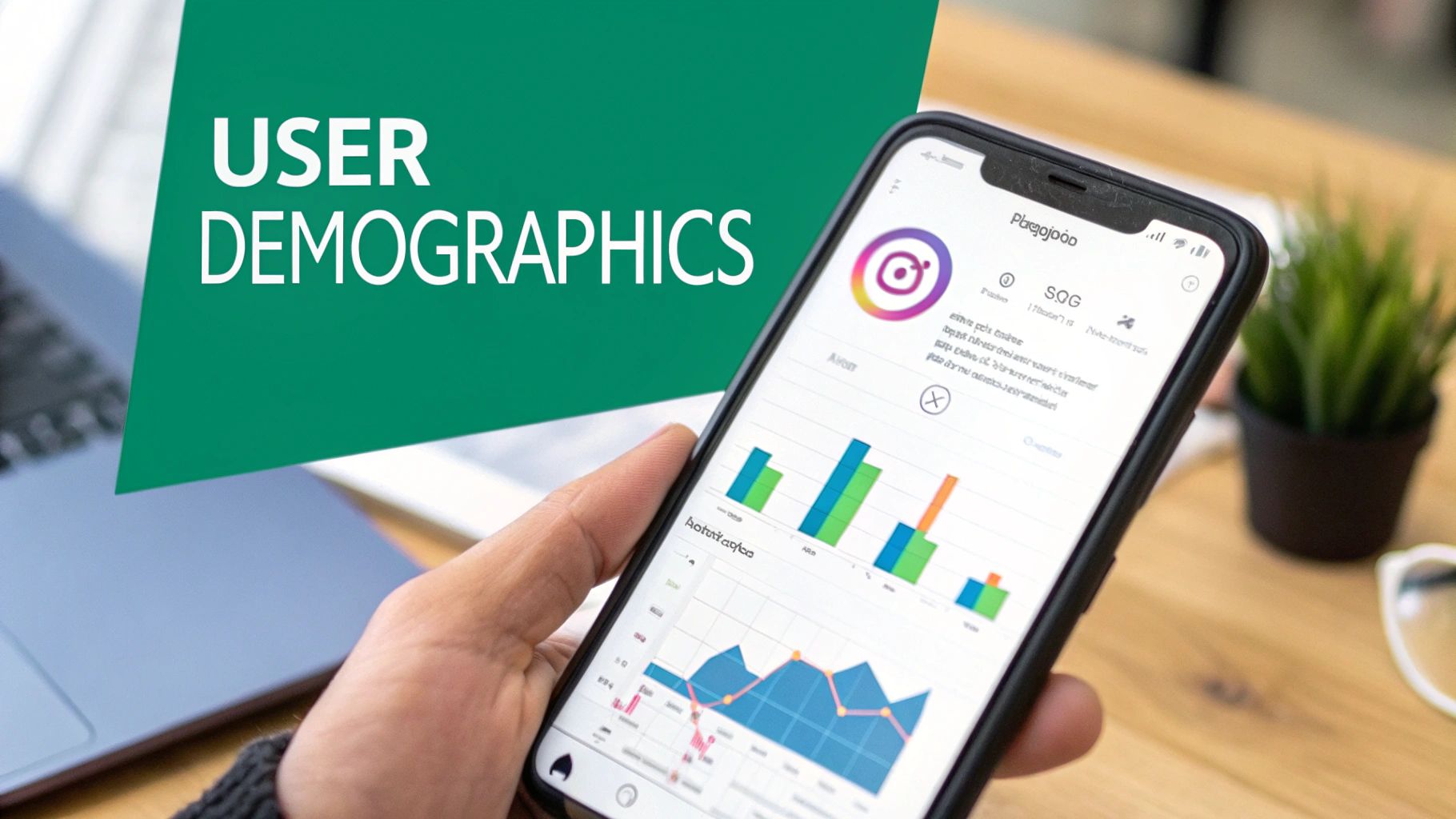
When measuring Instagram success, likes and follower counts only tell part of the story. What matters is how your audience connects with your content and takes action. Let's explore how successful brands track and improve engagement to drive real business growth.
Understanding Engagement Rate
Your engagement rate shows how much your audience interacts with your content. To calculate it, take your total engagements (likes, comments, shares, saves), divide by reach, and multiply by 100. For example, if 1,000 people see your post and 50 engage with it, you have a 5% engagement rate. This simple metric reveals whether your content resonates with viewers.
Analyzing Engagement Across Content Types
Each Instagram format offers different ways to connect with followers. Stories work well for quick polls and Q&As that start conversations. Reels shine when showing product demos or behind-the-scenes moments. The key is tracking which types of content drive the most meaningful interactions from your specific audience.
Benchmarking and Industry Insights
Context matters when evaluating your engagement metrics. The typical Instagram engagement rate is 0.70%, but this varies widely by industry - education sees 1.40% while fashion averages 0.28%. Account size also plays a role, with profiles between 100k-500k followers getting around 6.59% engagement on Reels. Check out more data here. These benchmarks help set realistic goals for your strategy. You might find it helpful to review: How to master your hashtags on Gainsty.
Turning Followers into Brand Advocates
Strong engagement creates genuine connections that turn followers into brand champions. When you consistently respond to comments, ask thoughtful questions, and run interactive polls, passive followers become active supporters who share your content and recommend your products. Look beyond just the numbers - analyze the tone and sentiment of comments and messages to understand how people truly feel about your brand. This deeper insight helps refine your approach and build lasting loyalty.
Choosing and Maximizing Analytics Tools for Success
Getting the most out of Instagram analytics for business comes down to picking and using the right tools. The key is combining Instagram's built-in analytics with specialized third-party platforms to track your performance and make smart decisions backed by data.
Instagram Insights: Your Built-In Analytics Hub
Instagram Insights provides essential data about your audience and content performance at no cost. Available to all business and creator accounts, this native tool shows you detailed information about who your followers are - from basic demographics to when they're most active on the platform.
The tool tracks key metrics like reach, impressions, and engagement on everything you post. You can see exactly how many people watched your latest Reel and how they interacted with it through likes, comments, and shares. This helps you understand which types of content connect best with your audience so you can create more of what works.
Third-Party Analytics Tools: Expanding Your Capabilities
While Instagram Insights covers the basics well, third-party analytics tools can take your analysis further. These platforms typically offer more in-depth reporting options, competitor tracking features, and ways to measure custom metrics that matter to your business.
Many tools focus on specific aspects of Instagram analytics for business, like tracking hashtag performance or measuring influencer campaigns. The right tool for you depends on your goals and what you need to measure. Some platforms can also save time by automating your reporting process.
Building Your Analytics Tech Stack
Smart brands use both Instagram Insights and third-party tools together to get a complete picture. Think of it as having a toolbox where each tool serves a specific purpose that adds value to your overall strategy.
For example, you might rely on Instagram Insights for daily engagement tracking while using a third-party tool to analyze hashtag effectiveness and study competitor strategies. This combined approach creates robust Instagram analytics for a business system that delivers real results.
Maximizing Your Analytics Investment
Having the right tools is just the start. To truly benefit from Instagram analytics for business, you need clear goals and a focus on metrics that directly connect to business outcomes. This means looking beyond surface-level numbers like follower count to track meaningful data like website visits and sales.
Set up a regular schedule to review your analytics and turn that data into action steps. This disciplined approach helps you improve your content, optimize when you post, and achieve your Instagram business goals. Remember that analytics aren't just about collecting numbers - they're about using insights to make better decisions that grow your business.
Building Data-Driven Content Strategies That Convert

The most effective Instagram content strategies come from understanding what works. By analyzing Instagram analytics for business, brands can create content that genuinely connects with their audience and delivers real results. Let's look at how successful brands use data to shape their content approach.
Using Performance Data to Inform Content Creation
The first step is getting clear on what your audience responds to. Take a close look at your top posts to spot patterns. For example, if your product demo Reels get significantly more engagement than static photos, that's a clear signal your followers prefer video content. This insight tells you to focus more energy on creating engaging video posts.
Pay special attention to which posts generate the most comments. High comment counts often reveal topics that your audience finds compelling enough to join the conversation. Use these insights to plan future content around themes that spark discussion.
Optimizing Posting Schedules with Analytics
Getting your timing right makes a huge difference on Instagram. Your Instagram analytics for business show exactly when your followers are most active online. By posting during these peak times, you give your content the best chance of being seen by more people.
Take note of specific engagement patterns. If your data shows most of your audience is active on weekdays from 5-7 PM, schedule your important posts then. This simple step helps ensure your content reaches the maximum number of interested followers.
Improving Targeting Accuracy
Knowing your audience's basic demographics helps create content that resonates. Instagram analytics reveal key details about your followers' age, location, interests, and more. This data lets you craft messages that speak directly to specific segments of your audience.
Put this knowledge to work by developing targeted content campaigns. For instance, if analytics show many of your followers are interested in fitness, create health and wellness content specifically for that segment of your audience.
Building a Feedback Loop
Making the most of Instagram analytics for business means creating an ongoing cycle between data and content creation. Review your performance regularly, adjust your approach based on what the numbers tell you, and measure how those changes impact engagement.
Think of it as an ongoing conversation with your audience, guided by data. The more you analyze, adjust, and measure, the better you'll get at creating content that truly connects with followers and helps achieve your business goals.
Future-Proofing Your Instagram Analytics Approach

Smart brands know that success on Instagram requires staying ahead of platform changes. A robust Instagram analytics strategy gives you the data and insights needed to adapt quickly when the platform evolves. Here's how to build an analytics approach that stands the test of time.
Adapting to Algorithm Updates
Instagram's complex feed algorithm determines which posts appear in users' feeds, and it changes frequently. Posts that performed well last month may see lower engagement today because of these shifts. This is why checking your Instagram analytics regularly matters - it helps you notice algorithm changes impacting your content.
For instance, if your Reels suddenly get less reach, it could mean the algorithm now favors different video styles. By tracking these metrics closely, you can quickly adjust your content approach, perhaps testing new video formats or topics that align with current platform preferences.
Navigating Privacy Changes
As user privacy becomes a bigger priority, new rules affect how brands can collect and use social media data. Recent privacy updates have changed what Instagram analytics data is available and how it can be accessed. The key is preparing for these changes proactively.
Good practices include being transparent with followers about data collection and finding privacy-friendly ways to measure results. Building trust with your audience while respecting data privacy helps create sustainable analytics practices.
Understanding Evolving User Behavior
Your Instagram audience's content preferences shift over time. The types of posts that got high engagement before may not work as well now. Regular analysis helps you spot these changes in user behavior early.
For example, if your data shows increasing engagement on video content, you might want to create more Reels or Stories. Looking at which content formats and topics resonate most helps you stay relevant to your followers. Learn more in our article about reviews and experiences with Gainsty.
Building a Flexible Analytics System
Creating an adaptable Instagram analytics system means choosing tools and metrics that can evolve with the platform. Using both Instagram's built-in Insights and external analytics tools gives you a complete view of performance.
Mix different data sources to avoid relying too heavily on any single metric or platform. Regular review sessions help you spot trends and adjust your approach based on real data, keeping your Instagram strategy fresh and effective.
Ready to grow your Instagram following with smart analytics? Gainsty, the AI-powered social assistant, helps you gain more engaged followers naturally. Visit Gainsty to learn how data-driven insights can boost your Instagram success.
